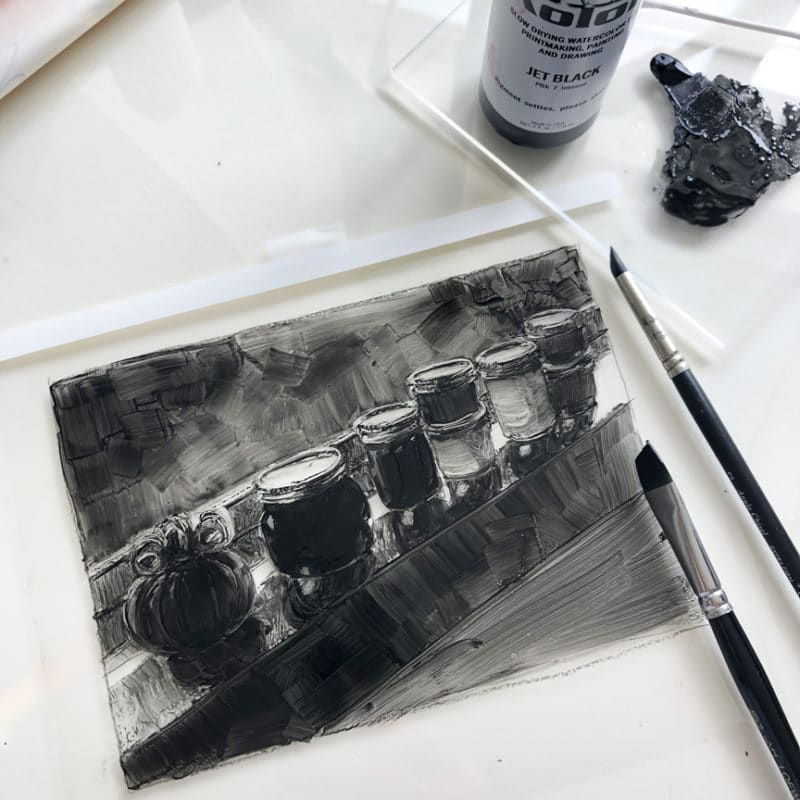

Saving Earth Britannica Presents Earth’s To-Do List for the 21st Century. In traditional printmaking, ink is transferred from a metal or glass plate to the paper.A sheet of thin paper is laid over the ink film and a pencil or pen drawing is made. Britannica Beyond We’ve created a new place where questions are at the center of learning. A trace monotype is a one-off print where there is no matrix for an edition, just a very thin film of rolled out ink.Repeat the process for the other two colors. To mix the colors for printing, put a few scoops of the transparent base (big scoops if you’re mixing for a large class) in a deli container and stir in several drops of the Akua Kolor until you get the level of transparency you like.

100 Women Britannica celebrates the centennial of the Nineteenth Amendment, highlighting suffragists and history-making politicians. a stack of drawing paper cut down to a little larger than the plate.The surface, or matrix, was historically a copper.
Momotype printmaking how to#
COVID-19 Portal While this global health crisis continues to evolve, it can be useful to look to past pandemics to better understand how to respond today. Monotyping is a type of printmaking made by drawing or painting on a smooth, non-absorbent surface.Student Portal Britannica is the ultimate student resource for key school subjects like history, government, literature, and more. Objectives: Provided a slideshow and images, SWBAT understand the history of printmaking and 2 monotype prints by observing Woman Reading by Edgar Degas.This Time in History In these videos, find out what happened this month (or any month!) in history.#WTFact Videos In #WTFact Britannica shares some of the most bizarre facts we can find.Demystified Videos In Demystified, Britannica has all the answers to your burning questions.Britannica Explains In these videos, Britannica explains a variety of topics and answers frequently asked questions.Britannica Classics Check out these retro videos from Encyclopedia Britannica’s archives.

Provided several inquiry questions, SWBAT reflect on their art making during and at the end of printing, by taking time to think about why they made the decisions they did and how they could/did affect their future print. (Blooms: Create | Standard: Transfer | GLE: Visual arts use emotional responses and personal decision-making to make meaning) Using prior knowledge, SWBAT transfer their understanding of shape, line, and color into the creation of their prints by visib ly showing their understanding of how those elements interact. This easily accessible medium allows both novices and experienced artists of all ages to create finished images in relatively few steps. (Blooms: Applying | Standard: Reflect and Create | GLE: Artists, viewers, and patrons make connections among the characteristics, expressive features, and purposes of art and design | AL: Literacy) price: 125 REGISTER HERE Learn the basics of a low tech and innovative painterly printmaking process called monotype Monotypes are unique prints made by the direct transfer of an image. (Blooms: Create | Standard: Create | GLE: Demonstrate basic studio skills | AL: Numeracy)Įxperimenting with the monotype process, SWBAT discern where they want to take their prints visually by recognizing trends in their experimenting and making informed decisions for the future of their printing. Using a monotype plate and tempera paint, SWBAT to create a monotype print by using layers and various subtractive tools successfully. Put on the gloves and pour a little bit of the CitriSolv into the empty container. (Blooms: Understanding | Standard: Comprehend | GLE: Art has intent and purpose | AL: Literacy and Technology) You need nitrile gloves (latex or vinyl gloves work too), and empty container, a brush, CitriSolv Concentrate, and a laserjet printout with high color saturation and high contrast and a surface upon which you will transfer the image (typically paper). Provided a slideshow and images, SWBAT understand the history of printmaking and 2 monotype prints by observing " Woman Reading" by Edgar Degas and Wall of Water, Maggi Hambling.


 0 kommentar(er)
0 kommentar(er)
